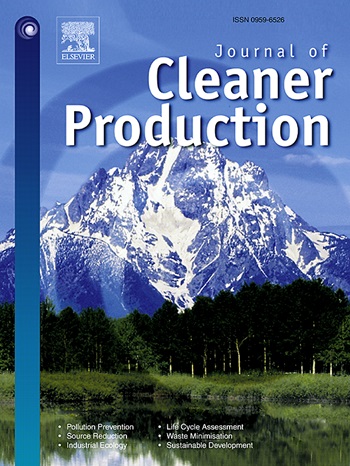Direct collection and reuse of dispersed aluminum chips through salt flux and supergravity enrichment: less salt consumption and circular economy
IF 9.7
1区 环境科学与生态学
Q1 ENGINEERING, ENVIRONMENTAL
引用次数: 0
Abstract
Machining chips are considered to be the most promising secondary aluminum resource for achieving a circular economy, as it only has to face the challenge of high surface-to-volume ratios. While salt flux technology has been recognized as the optimal strategy for recycling chips due to its outstanding oxidation suppression and impurity removal during melting, its sustainable value is constrained by excessive salt costs and potential environmental risks. This study introduces an innovative supergravity-enhanced technique that works synergistically with salt fluxes for extracting high cleanliness metals from chips, achieving higher yields of same-level aluminum while significantly reducing flux consumption. According to the investigation of enrichment mechanism under salt flux and supergravity, the oxide film covering the chips surface was rapidly stripped off by the erosion and adsorption of molten salt, and subsequently the coalesced melt and salt-slag clusters were accelerated to enrich and gradually stratified under supergravity enhancement. Ultimately, more than 99.5 % clean aluminum was collected in a short period of time, while residues were completely captured in the surface salt layer. Subsequently, over 99 % of salts were extracted and reused, successfully achieving harmless treatment of salt slags. Furthermore, a scaled-up continuous enrichment device was developed, with its economic and environmental costs evaluated through feasibility tests. This strategy demonstrated potential to increase profits by no less than 0.4 $/kg compared to conventional technologies, enhancing the economic viability of chip-to-metal conversion. Meanwhile, it amplified environmental benefits through closed-loop flux and waste minimization, effectively preventing the loss of valuable resources and the production of hazardous salt cakes.


通过盐通量和超重力富集直接收集和再利用分散的铝屑:减少盐的消耗和循环经济
加工芯片被认为是实现循环经济最有前途的二次铝资源,因为它只需要面对高表面体积比的挑战。虽然盐通量技术因其出色的氧化抑制和熔炼过程中的杂质去除而被认为是回收芯片的最佳策略,但其可持续价值受到过高的盐成本和潜在的环境风险的限制。本研究介绍了一种创新的超重力增强技术,该技术与盐助熔剂协同工作,从芯片中提取高清洁度金属,在显著降低助熔剂消耗的同时,实现了相同水平铝的更高产量。通过对盐通量和超重力作用下的富集机理的研究发现,覆盖在切屑表面的氧化膜被熔盐的侵蚀和吸附迅速剥离,随后在超重力增强作用下,凝聚的熔体和盐渣团簇加速富集并逐渐分层。最终,在短时间内收集了99.5%以上的清洁铝,而残留物完全捕获在表层盐层中。随后,99%以上的盐被提取并再利用,成功实现了盐渣的无害化处理。开发了一种放大连续富集装置,并通过可行性试验对其经济和环境成本进行了评价。与传统技术相比,该战略显示出每公斤利润不低于0.4美元的潜力,提高了芯片到金属转换的经济可行性。同时,通过闭环通量和废物最小化放大了环境效益,有效防止了宝贵资源的损失和有害盐饼的产生。
本文章由计算机程序翻译,如有差异,请以英文原文为准。
求助全文
约1分钟内获得全文
求助全文
来源期刊

Journal of Cleaner Production
环境科学-工程:环境
CiteScore
20.40
自引率
9.00%
发文量
4720
审稿时长
111 days
期刊介绍:
The Journal of Cleaner Production is an international, transdisciplinary journal that addresses and discusses theoretical and practical Cleaner Production, Environmental, and Sustainability issues. It aims to help societies become more sustainable by focusing on the concept of 'Cleaner Production', which aims at preventing waste production and increasing efficiencies in energy, water, resources, and human capital use. The journal serves as a platform for corporations, governments, education institutions, regions, and societies to engage in discussions and research related to Cleaner Production, environmental, and sustainability practices.
 求助内容:
求助内容: 应助结果提醒方式:
应助结果提醒方式:


